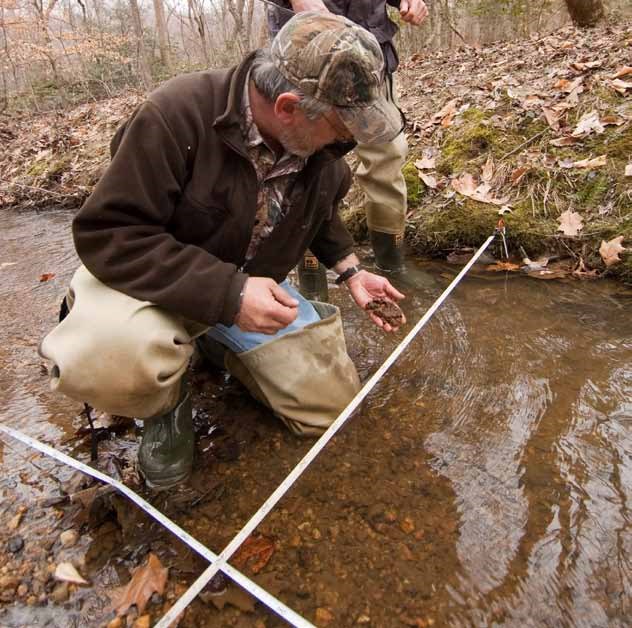
NPS / James Comiskey
Importance and Issues
Benthic macroinvertebrates are a vital component of all healthy stream ecosystems. They are instrumental in nutrient and carbon dynamics and are themselves an important link in stream food webs. Moreover, unlike fish and periphyton (i.e., benthic algae), benthic macroinvertebrate assemblages are both productive and diverse in virtually all undisturbed streams with permanent flow.
This is an important consideration in the Mid-Atlantic Network because many of the smaller tributary streams of component parks have gradients and natural barriers that impede the movement of fish, as well as canopies that restrict light and consequently limit algal productivity. As a result, fish and periphyton assemblages are often represented by very few species even in undisturbed streams.
Other advantages of using benthic macroinvertebrate assemblages to monitor streams include:
- They are good indicators of local conditions because most benthic species are either sessile or have limited migration patterns through their aquatic phases.
- They exhibit wide variation in tolerance among species and life stages to environmental stresses.
- Many species have long life cycles relative to other groups which allows inference regarding temporal trends.
- Sampling benthic macroinvertebrate assemblages is relatively easy and inexpensive, and has minimal effects on resident biota.
In addition, because benthic macroinvertebrates have been by far the most commonly used group for biological monitoring of aquatic habitats in North America, a large suite of benthic macroinvertebrate summary metrics have been evaluated with respect to natural variation and responses to numerous sources of degradation.
Monitoring Objectives
- Document the status of and trends in the structure and composition of benthic macroinvertebrates.
- Determine trends in macroinvertebrate communities in relation to changes in water quality and quantity.
Where We Monitor
- Appomattox Court House National Historical Park
- Booker T. Washington National Monument
- Eisenhower National Historic Site
- Fredericksburg & Spotsylvania National Military Park
- Gettysburg National Military Park
- Hopewell Furnace National Historic Site
- Petersburg National Battlefield Park
- Richmond National Battlefield
- Valley Forge National Historical Park
Monitoring Documents
Resource briefs are short PDFs summarizing our monitoring programs or results.
Source: NPS DataStore Saved Search 684 (results presented are a subset). To search for additional information, visit the NPS DataStore.
Source: NPS DataStore Saved Search 3722. To search for additional information, visit the NPS DataStore.
Source: NPS DataStore Saved Search 748. To search for additional information, visit the NPS DataStore.
Source: NPS DataStore Saved Search 5793. To search for additional information, visit the NPS DataStore.
For More Information
Contact: Nathan Dammeyer, Mid-Atlantic Network Ecologist
Last updated: March 19, 2025
